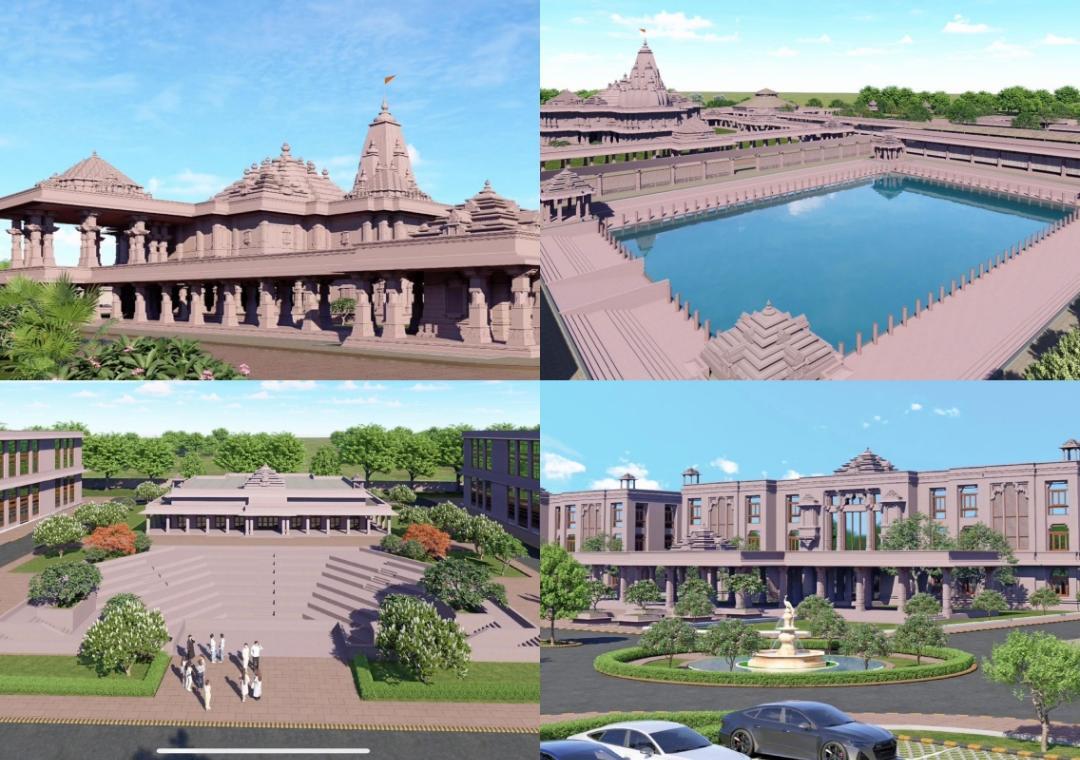Context:
The Bihar government has recently unveiled the architectural design for a grand Janaki Mandir at Punaura Dham, near Sitamarhi district — a site traditionally regarded as the birthplace of Goddess Sita. This initiative is an effort to honour and revitalise the cultural heritage of Mithila, one of India’s oldest and most culturally rich regions.
Features of the Janaki Mandir Project:
The newly designed temple complex will include:
- A magnificent shrine dedicated to Goddess Sita
- A sacred Sita Kund with steps on all four sides
- A meditation hall and a well-planned visiting area for devotees
- Upgraded road connectivity, thematic entry gates, and dedicated parking zones
The design aims to enhance the pilgrim experience while preserving the spiritual essence of the site.
Significance of Punaura Dham in Mithila’s Heritage:
- Punaura Dham is located in the heart of Mithila, a region steeped in history and mythological significance. According to tradition, Mithila was the kingdom of King Janaka, father of Sita.
- The region finds mention in the Vedic texts and was one of the 16 Mahajanapadas of ancient India. Historically known as Tirhut or Tirabhukti, Mithila spans across parts of north Bihar—including Sitamarhi, Darbhanga, Madhubani, Supaul, Saharsa, and Madhepura—and extends into the Terai region of Nepal.
- The geography of Mithila is defined by natural boundaries: the Himalayas to the north, the Ganges to the south, the Gandaki River to the west, and the Mahananda River to the east. This natural setting has shaped its distinct cultural identity over centuries.
Cultural Dimensions of Mithila:
- Language and Literature: The main language spoken in Mithila is Maithili, an Indo-Aryan language with a rich literary legacy. One of its most celebrated poets is Vidyapati (1352–1448 AD), whose devotional and romantic poetry has left a lasting mark on the region’s cultural psyche. Maithili literature includes epics, folktales, dramas, and religious biographies.
- Madhubani Painting: Mithila is globally renowned for its unique Madhubani (or Mithila) painting style. Traditionally created by women using natural dyes and geometric patterns, these paintings often depict themes from the Ramayana, daily life, and local flora and fauna. The art form is a living tradition and a strong symbol of cultural continuity.
- Mithila Makhana: The region is also known for Mithila Makhana (Euryale ferox), an aquatic fox nut cultivated in local ponds and wetlands. It holds a Geographical Indication (GI) tag, reflecting its economic and cultural importance.
Conclusion
The development of Janaki Mandir at Punaura Dham is more than a temple construction project. It represents a focused effort to preserve and celebrate the distinct identity of Mithila — its history, language, art, and spiritual heritage. Improved infrastructure and a well-planned temple complex will not only accommodate growing numbers of pilgrims but also draw attention to the region’s cultural depth.







